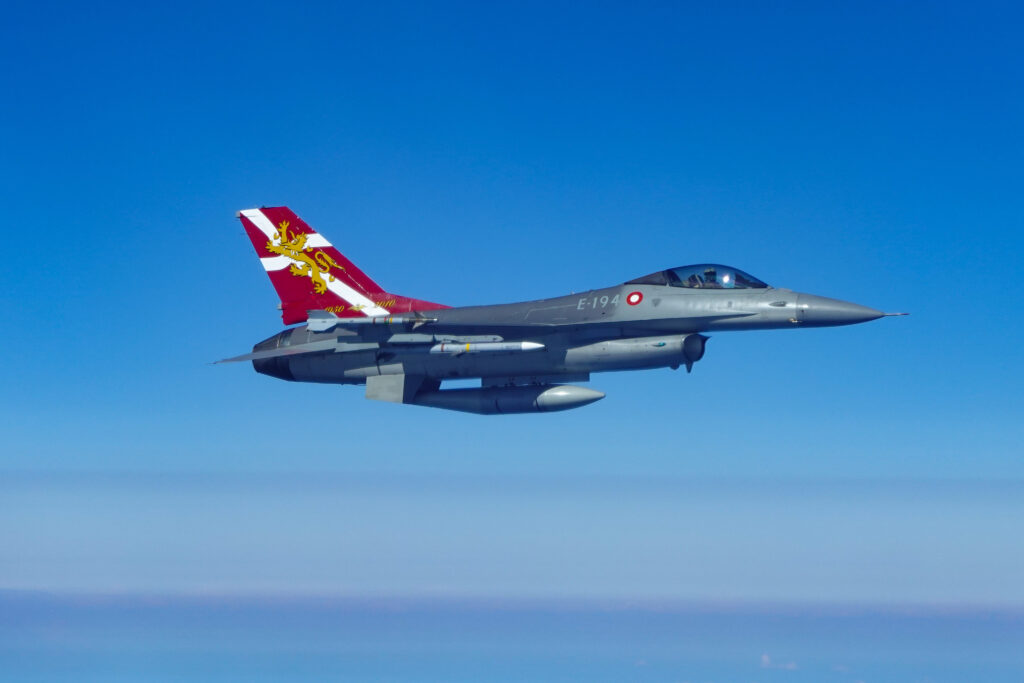A snapshot of recent news from sources around the world on the ongoing Russia-Ukraine war.
 Source: U.S. Air Force
Source: U.S. Air ForcePolitical Developments
As the war between Ukraine and Russia drags on, some reports suggest that more Ukrainians may be warming to the idea of a potential peace deal with Russia, even if it’s unclear what a peace deal might look like.
A new Pew Research Center survey found that the American public is divided on whether to continue providing security assistance funding for Ukraine. According to the survey, 48 percent of respondents said the U.S. has a responsibility to help Ukraine defend itself from Russia, while 49 percent disagreed with that stance.
North Korea’s support for Russia’s military is intensifying. Pyongyang is already supplying armaments, expanding its weapons production capacity to meet growing Russian demand. Reports indicate a surge in North Korean anti-armor missile manufacturing.
Military Assistance to Ukraine
The first F-16s have arrived in Ukraine, marking a significant step for Kyiv, which has sought the multirole fighters for over a year. Reports by Bloomberg, the Associated Press, and Reuters confirm the milestone. Denmark and the Netherlands are providing the initial jets, with Belgium and Norway to follow, totaling around 60 F-16s over the coming years. Although the exact number of jets delivered remains unclear, it is known that Ukraine has received only a small quantity so far. U.S. and allied officials have not confirmed the specifics of the F-16s’ armament or maintenance plans. While the U.S. will train 12 Ukrainian pilots and several maintainers this year, the full operational impact of the F-16s remains uncertain. The U.S. will supply precision munitions, but the scope of their use, including inside Russia, is still to be clarified.
Along with the F-16 fighters, the Wall Street Journal reported that Ukraine will be receiving AIM-120 AMRAAM and AIM-9X Sidewinder air-to-air missiles, AGM-88 HARM anti-radiation missiles, Joint Direct Attack Munitions, and Small-Diameter Bombs. U.S. Air Forces in Europe-Air Forces Africa Commander Gen. James B. Hecker said the F-16s won’t be a “golden bullet” that will suddenly give Ukraine air superiority, but “it does move them in the right direction.”
The U.S. announced a $1.7 billion military aid package to Ukraine on July 29. The aid is broken out into two components. The first comprises $200 million in drawdown authority to donate equipment directly from U.S. inventories. This announcement represents the 62nd drawdown of U.S. equipment for Ukraine, and includes air defense interceptors, rockets and artillery, and anti-tank weapons. The second component is $1.5 billion in Ukraine Security Assistance Initiative (USAI) funds, which will be used to buy new weapons and equipment directly from defense manufacturers. The new USAI funds will help procure additional air defense capabilities, munitions, and anti-tank weapons.
In response to a parliamentary question, British Under-Secretary of State for Defence, Luke Pollard, stated that London will provide over 10,000 UAVs and USVs to Ukraine this financial year. The U.K. and Ukraine announced a £3.5 billion defense export finance deal earlier in July, but Pollard stated, “Due to rapid battlefield changes, these drones are being procured and iterated rapidly using the Ministry of Defence’s annual £3 billion of support to Ukraine, rather than the £3.5 billion defence export finance deal.”
Turkey has launched the second Ada class corvette for the Ukrainian Navy, Hetman Ivan Vyhovskyi (F-212). The two sides agreed to the corvette deal in 2020, but the terms were modified after Russia launched its invasion in 2022. Hetman Ivan Vyhovskyi was laid down in August 2023.
The Ukrainian military has received more than 12,000 anti-tank weapons from the United Kingdom since the start of Russia’s invasion. This information was disclosed by an official with the British Ministry of Defence (MoD).
Battlefield Updates
Russian forces have reportedly employed the North Korean Bulsae-4, a long-range self-propelled anti-tank missile system, in their attacks on Ukraine. The Bulsae-4 launcher is mounted on a North Korean M-2010 six-wheeled armored personnel carrier chassis. It features a rotating turret equipped with eight missile containers.
Ukrainian drones hit Olenya airfield in northern Russia on July 27, targeting a Tu-22M3 bomber stationed at the airbase. Olenya airbase is located over 1,900 kilometers from Ukraine. The Deputy Minister for Strategic Industries and Industry of Ukraine, Anna Hvozdiar, stated this week that Ukraine has the capacity to produce up to 3 million drones of different types annually.
On Sunday, July 28, Russia announced the capture of two villages in Donetsk, as its units deployed in the area continue an offensive towards the city of Pokrovsk. Serhiy Dobriak, who heads Pokrovsk’s military administration, told media the following day that the frontlines are about 20 kilometers from the city and residents have begun evacuating. President Zelensky called Pokrovsk Russia’s main target in a statement on Thursday.
The Ukrainian Air Force said on Wednesday that it had “withstood and repelled” one of the largest Russian aerial attacks on Kyiv in months, involving a cruise missile and dozens of drones. Ukraine carried out its own strikes overnight on July 31, targeting a storage facility in Kursk.
Russian state arms conglomerate Rostec announced on Wednesday that it had delivered another set of 152mm 2S43 Malva self-propelled howitzers to the Russian Army. The howitzer entered service in 2023 and was confirmed to be on the battlefield in Ukraine earlier this year. On Friday, Rostec said that a batch of BMD-4M and BMP-3 armored vehicles were delivered to the military.
Ukriane has used the ATACMS (Army Tactical Missile System) to attack the Russian-operated Saky airfield in Crimea. The attack occurred in the early hours of July 26.
For 50 years, Forecast International intelligence reports have been the aerospace and defense industry standard for accurate research, analysis, and projections. Our experienced analysts compile, evaluate, and present accurate data for decision makers. FI's market research reports offer concise analysis of individual programs and identify market opportunities. Each report includes a program overview, detailed statistics, recent developments and a competitive analysis, culminating in production forecasts spanning 10 or 15 years. Let our market intelligence reports be a key part of reducing uncertainties and mastering your specific market and its growth potential. Find out more at www.forecastinternational.com
image sources
- Danish Air Force F-16: U.S. Air Force



